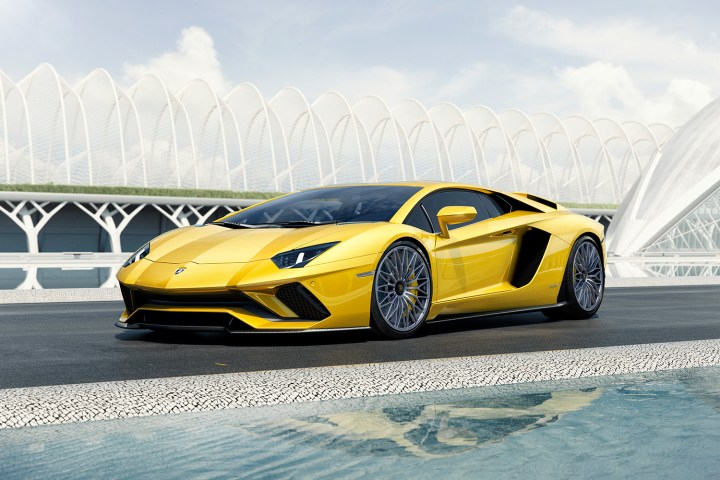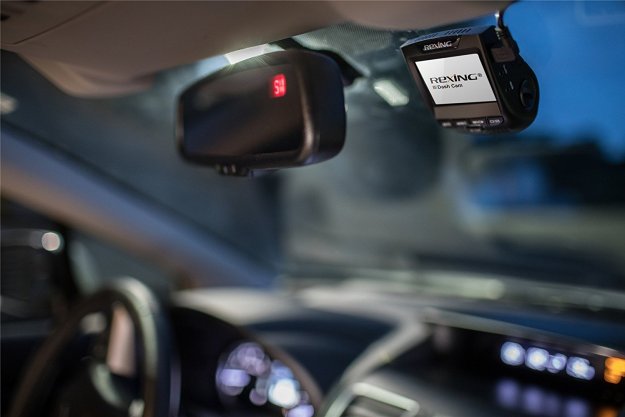
Everything changed on the eve of the Frankfurt show, when Volkswagen Group boss Matthias Müller announced plans to electrify every single model from every single brand by the year 2030. His message to product planners and engineers was clear: figure it out. So should we expect to see an electrified Lamborghini? We sat down with Maurizio Reggiani, the head of Lamborghini’s research and development department, on the sidelines of the Frankfurt show to get insight on what the new strategy means for the brand.
Digital Trends: When we talked to you in Geneva, you mentioned electrification wasn’t quite ready for a super-sports cars like the Aventador. But now, the man in charge just said this needs to happen by 2030. How will this affect your department?
“Lamborghini is looking towards plug-in hybrid technology for the super-sports cars and also the Urus. Not full electric, though.”
Maurizio Reggiani: At this time, Lamborghini is looking towards plug-in hybrid (PHEV) technology for the super-sports cars and also the Urus. Not full electric, though. In our vision, PHEV is the most suitable technology for a super-sports car, but it’s clear we need to fight against the weight of the battery pack and figure out how to best package it. In the Urus, we have fewer problems in terms of weight and packaging because it’s bigger.
For the super-sports cars, we are looking at the weight of the battery. We wish to reduce it, because at the end that’s what has the most dramatic effect on a car. Weight is our enemy.
How will PHEV technology affect the way one of your cars – a Huracan, for example – drives?
At the moment, we’re talking about adding almost 450 pounds. Again, I wish this figure can be reduced. It’s fundamental to talk about new technology. We work really hard in terms of scouting new technology, and we also struck an important partnership last year with the Massachusetts Institute of Technology (MIT) in Boston. Before the end of the year, we will make an announcement about this project. It deals with weight reduction and electrification.
Can you offset the weight added by a battery pack via lightweight materials, like carbon fiber?
No. The problem, if I look towards the future, is the requests in terms of safety, in terms of homologation, and for passive and active restraints system will increase. It’s clear that I need to use more and more carbon fiber in order to offset the increase of weight due to the homologation requests, but less than a certain number you cannot go.
Are you confident you can integrate electrification into a super-sports car without making compromises?
Let me give you an example. I remember in the 1980s when the United States began making catalytic converters mandatory. Everybody in Europe said “oh my god, super-sports cars are dead! With the catalytic converter you have no sound, you have no power, you lose more or less everything.”

What happened after we installed the catalytic converter is that the weight of the powertrain actually decreased and the power increased. It’s a question of putting the right pressure on the engineers, and of giving them a task that challenges them, not one that’s comfortable. I don’t accept we’ll be stuck using the weight of today’s batteries. I think if we put the right pressure, and we have the right effort from researchers, it will be possible to reduce weight dramatically. It’s clear at the moment it’s not suitable, but I think all the super-sports brands will have the same problem.
Will you use components from other Volkswagen Group brands, or will you develop your own?
For the Urus, we’ll use components from the group as often as possible. Weight and packaging aren’t as problematic in a big car like the Urus, so it’d be stupid not to use what the group can give us. You’ll see something different in our super-sports cars, where the packaging is Lamborghini-specific and weight is our big enemy.
Are you open to using PHEV tech to create an e-boost effect?
We first need to define the engineering of the super-sport hybrid car. We have the possibility to set up our car in terms of [driving modes like] strada, sport, and corsa. Based on what we want to choose, we must give electrification a different dynamic behavior. We must customize electrification for a super-sports car. It cannot be the same electrification you experience in a normal premium car.




